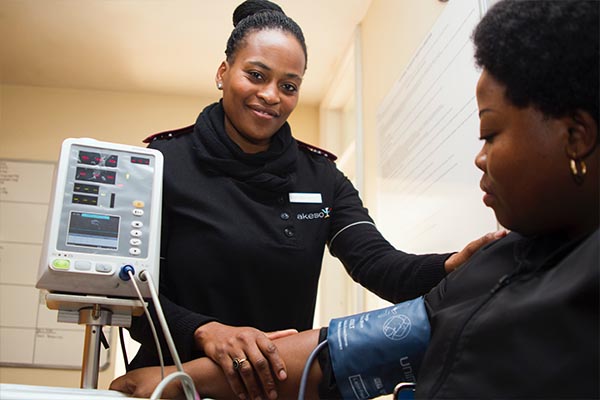Northeast Medical Institute CNA Training Stamford: Expert Instruction for Hopeful CNAs
Northeast Medical Institute CNA Training Stamford: Expert Instruction for Hopeful CNAs
Blog Article
Vital Variables to Take Into Consideration When Selecting one of the most Ideal Medical College Educational Program for You
Choosing the most fitting clinical school educational program is an essential decision that can considerably influence your academic trip and future profession course. As striving clinical experts, the choice of educational program ought to align with your personal understanding design and job aspirations.
Personal Discovering Design

Medical schools that offer varied training techniques and sources can fit various learning designs, cultivating a vibrant and inclusive instructional setting. Inevitably, comprehending personal learning preferences encourages trainees to make educated decisions concerning their clinical education, setting a strong structure for their future careers in health care.
Career Goals Placement

Furthermore, aligning job goals with the medical college curriculum can additionally improve motivation and interaction throughout the instructional trip. When students see the straight relevance of their coursework to their future job, they are more probable to remain focused and devoted to their researches. Therefore, when choosing a clinical school educational program, it is essential to meticulously consider just how well it aligns with one's profession purposes to guarantee an effective and fulfilling professional course.
Teaching Techniques
Considering the positioning of job objectives with the selected clinical school curriculum, an assessment of the training approaches utilized comes to be crucial in shaping the discovering experience. The performance of a medical school curriculum greatly depends on the training methodologies used by the organization. Numerous training methods, such as lectures, small group discussions, problem-based discovering, simulation-based training, and hands-on professional experience, can significantly impact how well trainees maintain and realize details.
Simulation-based training enables pupils to exercise scientific skills in a controlled setting prior to communicating with real people. Hands-on professional experience uses a firsthand understanding of patient treatment and medical practices.
When picking a medical school educational program, striving students need to think about the teaching techniques utilized to ensure that their understanding choices and strengths straighten with the academic approach of the establishment.
Educational Program Versatility
When examining medical college programs, examining the level of educational program adaptability is important for prospective pupils seeking a tailored educational experience. Educational program adaptability refers to the level to which students can individualize their knowing courses within the medical college curriculum. An educational program that offers versatility permits trainees to seek their interests, emphasis on locations where they need a lot more support, and engage in learning experiences that straighten with their job objectives.

Potential medical trainees should take into consideration exactly how a clinical college's curriculum flexibility lines up with their learning preferences, job ambitions, and individual goals. By selecting a program that offers the ideal equilibrium of structure and adaptability, students can enhance their instructional experience and prepare themselves for successful jobs in medicine.
Medical Direct Exposure Opportunities
Exploring the useful application of clinical expertise, clinical exposure chances play a critical role in shaping a detailed clinical education and learning. These opportunities provide trainees with very useful hands-on experience in real health care setups, permitting them to link the gap between theory and practice. When thinking about clinical institution educational program, the top quality and amount of professional direct exposure must be carefully assessed.
Efficient medical direct exposure should provide a diverse variety of experiences across various specialties, ensuring that students are exposed to different medical circumstances and person demographics. Direct exposure to outpatient facilities, inpatient wards, medical cinemas, and emergency situation divisions can aid pupils develop a well-rounded understanding of different facets of medical care distribution. In addition, chances for community-based care and interactions with underserved populations can cultivate a much deeper recognition for the social factors of health and wellness.
Additionally, the presence of encouraging professors and advisors during these medical experiences can significantly boost the discovering process. Faculty guidance and positive comments can help pupils mirror on their medical encounters, recognize areas for improvement, and boost their scientific skills and decision-making capacities (Northeast Medical Institute CNA Classes Near me Stamford). On the whole, robust clinical direct exposure chances are important this website for preparing future medical professionals to provide quality person care properly
Final Thought
Finally, when picking a medical college curriculum, it is vital to consider recommended you read your individual discovering style, placement with occupation purposes, teaching approaches, educational program flexibility, and medical direct exposure chances. These elements play an essential duty in determining one of the most suitable program for your specialist and educational growth. Ensure to extensively evaluate each element to make an informed decision that will certainly best sustain your growth in the medical area.
Understanding one's personal understanding style is important when picking a medical school educational program. By recognizing one's learning style early on, striving clinical pupils can tactically pick an educational program that caters to their staminas, ultimately enhancing their knowing experience and scholastic success.
When reviewing medical school programs, evaluating the degree of educational program adaptability is essential for prospective trainees looking for a customized instructional experience. Educational program flexibility refers to the degree to which trainees can personalize their learning courses within the clinical college educational program.In conclusion, when selecting a medical college educational program, it is essential to consider your personal learning style, alignment with career objectives, teaching approaches, curriculum flexibility, and clinical exposure opportunities.
Report this page